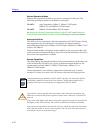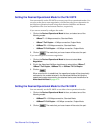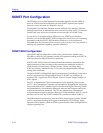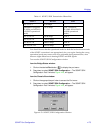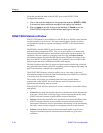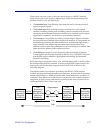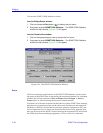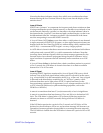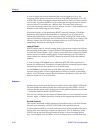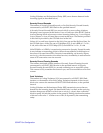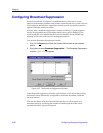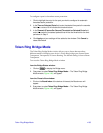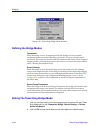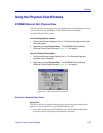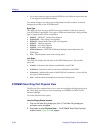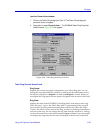
Bridging
4-80 SONET Port Configuration
A Loss of Signal may also be detected if the received signal level (e.g., the
incoming optical power) falls below a Bit Error Rate (BER) threshold of 1 in 10
3
.
A BER is the number of coding violations detected in an interval of time (usually
one second). A predicted BER of 1 in 10
3
means that during each second, there is
an error ratio of 1 errored bit per 1,000 bits sent. This state clears when two
consecutive framing patterns are received, and no Òall zerosÓ LOS conditions are
detected in the intervening time (one frame).
Note that for path- or line-terminating SONET network elements, LOS failure
detection is also linked to the declaration or clearing of Loss of Frame (LOF)
failures (described below). If there was a previously existing LOF failure at the
time an LOS failure is declared, the LOF failure will be cleared; if an existing LOS
failure is cleared, but LOF failure conditions still exist, an LOF failure will be
immediately declared on clearing the LOS failure.
Loss of Frame
SONET frames uses A1 and A2 framing bytes in the section overhead to indicate
the beginning of the frame. An Out of Frame (OOF) alignment defect (also known
as a Severely Errored FrameÑSEFÑdefect) occurs when four consecutive SONET
frames are received with invalid patterns in these framing bytes. This defect is
cleared when two consecutive SONET frames are received with valid framing
patterns.
A Loss of Frame (LOF) defect occurs when this OOF/SEF defect persists for a
period of 3 milliseconds. This defect is cleared when the incoming signal remains
continuously in-frame for a period of 1 to 3 milliseconds.
An LOF failure is declared when an LOF defect persists for a period of 2 to 3
seconds (except when a Loss of Signal defect or failure is present, as described
above). An LOF failure is cleared if an LOS failure is declared, or when the LOF
defect is absent for 9.5 to 10.5 seconds.
Statistics
Statistics are given for both the Near-End and Far-End of the SONET/SDH path.
Far-end statistics are taken from the far-end block error code (FEBE)Ñused to
indicate that the remote entity at the far-end of the path has detected errored data
Ñwithin the Path Overhead of SONET frames.
You can view statistics for the current 15-minute interval, or accumulated over the
last one-, eight-, or 24-hour period by clicking on the appropriate selection button.
Errored Seconds
The counter associated with the number of Errored Seconds, or Far-End Errored
Seconds, encountered by a SONET/SDH Path in the speciÞed interval.
An Errored Second (ES) is a second with one or more coding violations (bit parity
errors) at the associated layer reported at the Section, Line, or Path layer of the
SONET link, or a second during which at least one or more incoming defects
(e.g., Loss of Signal, Loss of Pointer, or Loss of Frame) has occurred at that layer.



